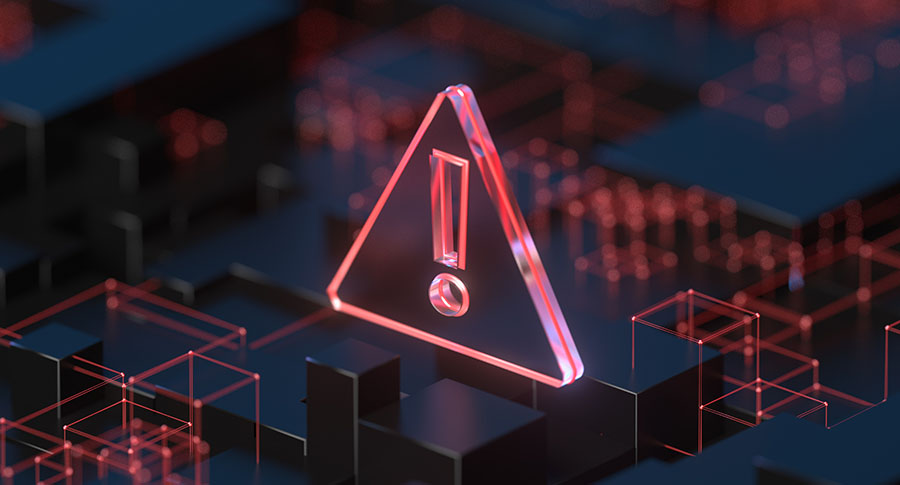Do you want to make sure that your network disaster recovery plan is thorough and complete? Are you sure that you’re ready for anything that may come and take down your networks?
In this guide, we’ll talk about the five parts of your disaster recovery plan that you’re most likely missing.
Network disasters can come in any form, from performance degradation to network outages. They can occur anywhere and at any time, which affects your business. You must have a reliable, solid, and inclusive disaster recovery plan (DRP).
Below, we’ll discuss five things that you can do to improve your disaster recovery plan. Keep reading to learn what yours may be missing and what you can do to fill it in. We’ve included some tips on how to change your network disaster recovery plan and how to make sure it’s thorough.
1. You’re Ready for Only One Type of Disaster
One of the most common disasters cited by a disaster recovery strategy is a shutdown. Less than 6 months after a cyberattack, 60% of small businesses have to shut down. This rate of shutdowns caused by a cyberattack is alarming, so most businesses prepare for it.
The problem is that it can also be easy to forget about other disasters that can strike your business. Other common network disasters that can impact your business are:
- Outages
- Surges
- Password disasters
If you operate or work in a place where lightning strikes or storms often occur, keep this in mind. You may lose power any time the weather looks sour. It’s always good to be ready for anything like outages, lightning storms, and power surges.
The best way to prepare your business for such disasters is to use surge protectors. It’s also good to use uninterruptible power supplies (UPS) to give backup power to the computers. They may not give you enough time to finish your work.
However, they can give you the necessary time to back up, save, and protect your data. Instead of having sudden shutdowns, you’ll have time to shut down your systems right. It’ll protect your data as well as your computers and other devices.
Avoiding Password Disasters
You should also be ready to handle password disasters. Keep in mind that your system security and protection are only as strong as your weakest link. While it can be tricky to use some apps and software, human error is one of the main causes of security failure.
This human error can be an action as simple as using weak passwords. It can also be as damaging as the use of one password for various accounts. Thus, avoid these practices when you create passwords for your business accounts.
Strong passwords are codes that use a combination of letters, symbols, and numbers. You should also ensure your employees don’t save passwords in computer files or on paper. If they have trouble memorizing passwords, use a secure and trusted password manager.
2. You Aren’t Testing and Documenting as Often as You Should
How sure are you that your disaster recovery plans are going to work every time? When was the last time you updated your operations, systems, and software? If you didn’t update your DRP along with them, then you’re in for a surprise—and it’s not the good kind.
Updating your DRP is a key step to making sure it’s still relevant and working should you need it. Think of it as updating your evacuation floor plan after you have added wings and levels to your building. In the case of a fire, you can’t get to safety if your evacuation plan doesn’t match your building anymore.
That is the importance of updating your DRP every time you also add new aspects to your operations. To do this, you must document every change and new part of your daily operations. It could be having a new team, use of new software, or transforming to wireless connections.
Every time you make a change, record it. After you document it, see how it fits into your disaster recovery plan. What steps can you take to make sure that you’re ready and equipped for network disasters with these updates?
Remember that your IT team can’t fix every issue that occurs on a digital machine. Your IT team isn’t an all-purpose troubleshooter, especially if you only call IT when you have an issue. This is one of the most common IT support misconceptions in the workplace.
3. Your Disaster Recovery Plan Lacks Contingencies and Communications
How well-planned is your “Plan B,” or are you lacking one? Every network disaster recovery plan must have contingencies if it doesn’t work. It’s good to have faith that your DRP will work, but sometimes it won’t work in a situation or disaster.
Remember how Batman is always ready for anything, no matter how unlikely an event is going to occur. As much as possible, you want to take a “Batman approach” whenever you’re creating a disaster recovery plan. Use these tips in your next risk assessment when you design your DRP.
Create contingency plans by asking yourself or your team what you’d do if a part of your DRP doesn’t work. Look for solutions from there and start expanding upon other what-if scenarios. Doing this can also help you find alternative actions and tools for your company’s operations.
Communicating Your DRP
Do your teams and employees know what to do in the event of a disaster? Are they informed or updated with your newest network disaster recovery plans? Another major problem in designing a DRP is communications.
No matter how well-designed or well-made your DRP is, it’s useless if your employees don’t know about it. It’s also not going to work if they don’t know how it works or its updated steps for network recovery. If you’re designing or updating the company’s disaster recovery plan, make sure you also share it with your employees.
4. You Don’t Have a Secondary Offsite Datacenter
It’s only wise to make a backup of everything, especially vital data, and files. Many companies use hard drives for these backups. Yet, did you know that 94% of enterprises were already on the cloud in 2019? In case of disasters like floods and earthquakes, these hard drives may get damaged. Even the lack of proper storage temperatures and moisture can damage them. You’d lose your backup files in a snap, sometimes without even knowing it until you need them.
Plus, hard drives tend to take up space in your office. It’ll be all right to keep them around if you’ve got an extra storage room that’s dry, at room temperature, and secure. However, if you’re only running a small business, it’s challenging to find your backup drives a home.
Cloud computing is more convenient today since all you’ll need to access your data is to be online. You can be anywhere—at home or a vacation house in Southeast Asia, and you can still access vital files. You can also access them anytime, whether the time is 3 AM or noon.
Using a cloud also keeps you from having to lug around and store hard drives for backup. You don’t need to assign a dedicated storage space for these drives. All your files are in the cloud already, after all. The use of the cloud is an excellent disaster recovery plan example that you should also emulate.
To use this solution, partner with a flexible IT services provider. Most IT service providers offer cloud backup services and enterprise secondary storage options. Pick an offer that best fits your business model, DRP goals, and budget.
5. Your Network Disaster Recovery Plan Doesn’t Include a Real Plan
The last item on this network disaster recovery plan checklist is to have an actual plan. It’s not enough to back up your data on a cloud or to have incomplete backup plans. You should have a network disaster recovery plan that’s operational.
Your DRP template should include key parts like:
- IT DRP overview
- IT infrastructure overview
- IT DRP phases
- IT DRP procedures
You should also include an introduction, the DRP goals and scope, and budget use. It also helps to have an outline for the document for its readers.
Remember that the average cost of downtime for each business is $10,000 for each hour. The true cost of tech or IT downtime will differ for each business, but one thing is for sure when an incident occurs. All businesses will lose money during downtime.
Master the Art and Science of Creating the Perfect Disaster Recovery Project
Those are the five things you must make sure are part of your network disaster recovery plan. Remember, a network disaster recovery plan must be thorough, encompassing, and organized. We hope you learned something useful from this informative guide on designing DRPs.
Do you want outside IT support to help you find the holes in your disaster recovery plan? We can help you find weaknesses and inconsistencies and find solutions for them. All you need to do is give us a visit by checking out our contact page here.
Network disasters can come in any form, from performance degradation to network outages. They can occur anywhere and at any time, which affects your business. You must have a reliable, solid, and inclusive disaster recovery plan (DRP).
Contact us to learn more about how Bridgehead I.T. can help you align your I.T. with your business objectives.


